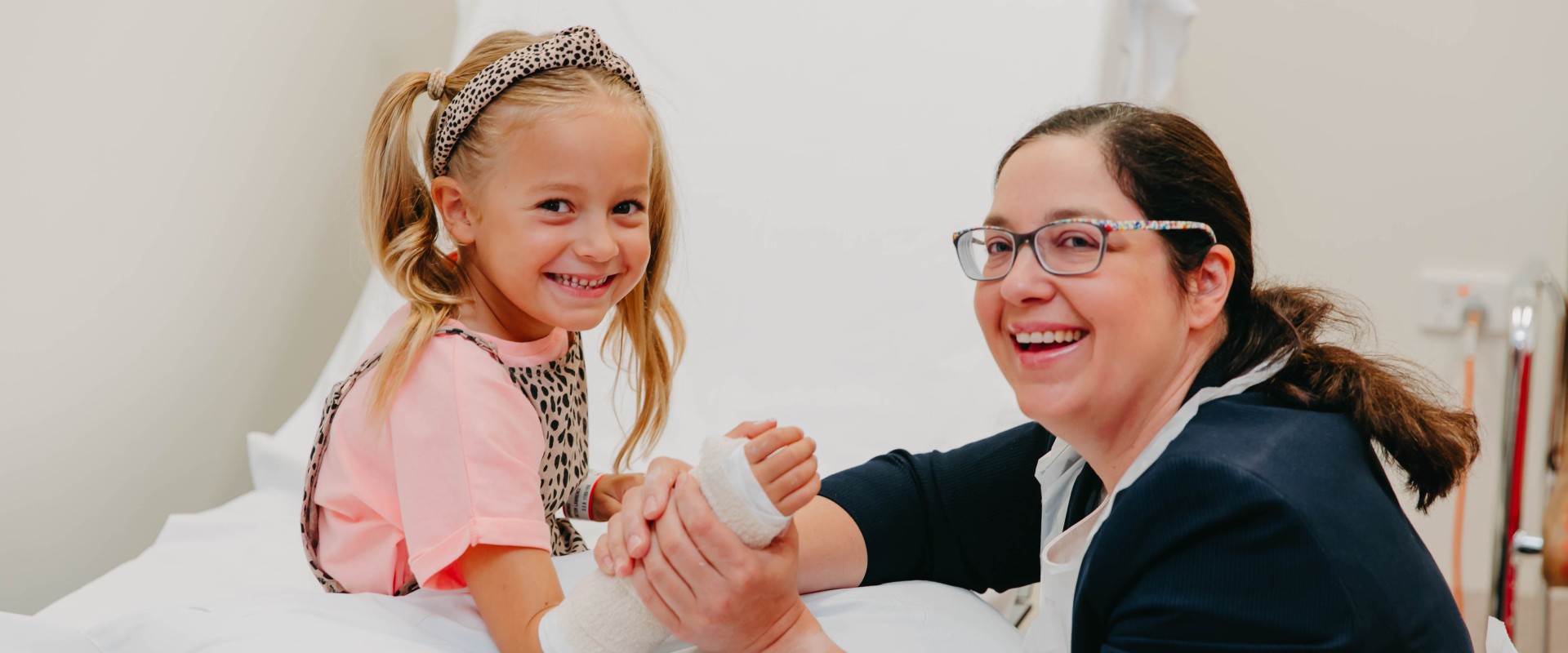Growing kids- what's normal and what's not?
Dr Annabelle Stabler

Caring for kids is not the same as treating adults in Orthopaedics.
Children have different proportions and they grow. Their limb bones have physes, or growth plates, which adds unique challenges and benefits compared with managing adults.
Dr Annabelle Stabler, who is part of Gold Coast Private's new Paediatric Orthopaedic Service, said it’s important to remember that it is not just little bodies that are growing, but little minds too.
"A child’s ability to manage any change in their environment or follow a rehabilitation plan is completely different to an adult's. The ability to care for children in a specialised, child and family focused setting, makes a big difference," she said.
“While every child grows differently, they tend to follow a similar pattern of growth.
“Babies and infants grow very rapidly. Growth slows in adolescence, and children reach skeletal maturity sometime around 14 for girls and 18 for boys.”
Dr Stabler, who is a Gold Coast Paediatric Orthopaedic Surgeon, said kids' bones have a large capacity for remodeling.
"This means that after a fracture, the bone will often straighten out with growth. However, if there is an injury to their growth plate, this can result in progressive deformity," she said.
"These kids need to be monitored over an extended period. In a young child, with plenty of growth remaining, this deformity could be quite significant over time and often further surgical management is needed."
Dr Stabler said the shape of a normal child’s legs change as they grow.
“GPs who follow little patients throughout their childhood see that babies start out very bow legged, straighten around 18 months and then by preschool tend to be quite knock-kneed," she said.
“We generally consider a child who is bow-legged after the age of two or significantly knock-kneed after the age of seven to warrant further assessment and potentially treatment.
"Angular deformity can sometimes be a sign of a wide variety of problems.
“GPs have a big role to play in screening kids who present with abnormal growth throughout childhood.”
Dr Stabler also has a particular interest in looking after children with hip problems. This includes babies with dysplastic hips, older children with Perthes and SUFE and children with Neuromuscular conditions such as Cerebral Palsy.
Dr Stabler said the most common cause of young adults needing hip salvage surgery or hip replacements is from hip problems from childhood.
She said early diagnosis and treatment can minimise problems in later life.
With Developmental Dysplasia of the Hip and Neuromuscular hip conditions in particular, screening and early non-operative intervention can make a huge difference for many children.”
“Paediatric Orthopaedics as a sub-specialty is unique. In some circumstances surgery is certainly needed acutely and really is the best option," Dr Stabler said.
"For many childhood conditions though, surgery may not be needed straight away or at all. There are often other treatment options such as splinting or exercises that may be beneficial.
“Some of my patients with significant medical conditions will be under Paediatric Orthopaedic care throughout their childhood. We get to know the child and their family very well. It is a really special part of my role to see these kids grow up and achieve.”
For more information Dr Stabler can be contacted at:
Growing Kids Orthopaedics
Lister House
132 Queen Street, Southport
1300 17 17 10
admin@growingkidsorthopaedics.com.au
